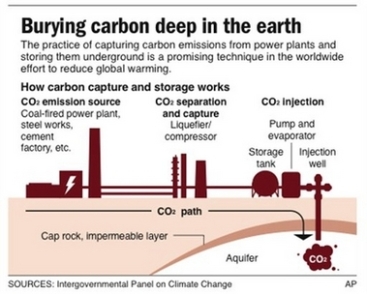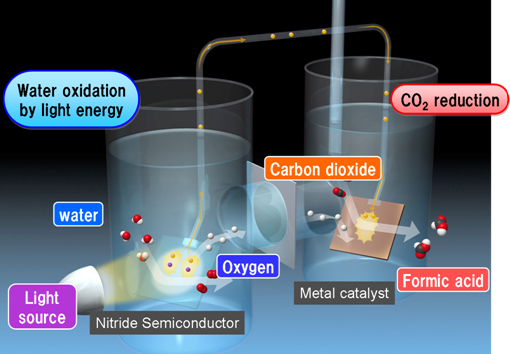Photosynthesis is a process used by plants and other organisms to convert the light energy captured from the sun into chemical energy that can be used to fuel the organism's activities. Photosynthesis occurs in plants, algae, and many species of bacteria, but not in archaea.
The first photosynthetic organisms probably evolved about 3,500 million years ago, early in the evolutionary history of life, when all forms of life on Earth were microorganisms and the atmosphere had much more carbon dioxide. They most likely used hydrogen or hydrogen sulfide as sources of electrons, rather than water. Cyanobacteria appeared later, around 3,000 million years ago, and drastically changed the Earth when they began to oxygenate the atmosphere, beginning about 2,400 million years ago. This new atmosphere allowed the evolution of complex life such as protists. Eventually, no later than a billion years ago, one of these protists formed a symbiotic relationship with a cyanobacterium, producing the ancestor of many plants and algae. The chloroplasts in modern plants are the descendants of these ancient symbiotic cyanobacteria.
Photosynthesis happens when water is absorbed by the roots of green plants and is carried to the leaves by the xylem, and carbon dioxide is obtained from air that enters the leaves through the stomata and diffuses to the cells containing chlorophyll. In the light reactions, one molecule of the pigment chlorophyll absorbs one photon and loses one electron. This electron is passed to a modified form of chlorophyll called pheophytin, which passes the electron to a quinone molecule, allowing the start of a flow of electrons down an electron transport chain that leads to the ultimate reduction of NADP to NADPH. In addition, this creates a proton gradient across the chloroplast membrane; its dissipation is used by ATP synthase for the concomitant synthesis of ATP. The chlorophyll molecule regains the lost electron from a water molecule through a process called photolysis, which releases a dioxygen (O2) molecule.
In the light-independent (or "dark") reactions, the enzyme RuBisCO captures CO2 from the atmosphere and in a process that requires the newly formed NADPH, called the Calvin-Benson Cycle, releases three-carbon sugars, which are later combined to form sucrose and starch.
carbon fixation produces an intermediate product, which is then converted to the final carbohydrate products. The carbon skeletons produced by photosynthesis are then variously used to form other organic compounds, such as the building material cellulose, as precursors for lipid and amino acid biosynthesis, or as a fuel in cellular respiration. The latter occurs not only in plants but also in animals when the energy from plants gets passed through a food chain.

While nature has provided essential oxygen and food from plants, man has attempted to utilize the sun for energy production. Solar cells have been able to generate clean power as each photon strikes the surface of a solar array freeing up an electron, its combined photoelectric effect seemed like the only principle to make use of the sun artificially.
Professor Ray Frost, from Queensland University of Technology's School of Physical and Chemical Sciences, said the idea of geosequestration was to trap carbon dioxide and to lock it into minerals deep underground. Geosequestration of carbon dioxide is one of the methods under debate to reduce greenhouse gases and their effects on climate change.
The chemical process of using calcium or sodium hydroxide to absorb CO2 has been known for years but the question of whether it can be done in an affordable energy efficient manner has not yet been fully answered. Constructing and erecting the collector device is only 20% of the cost; the remainder of the cost involves prying the CO2 loose from the absorbent and storing it- an energy intensive process. The back of the envelope calculation of total cost supposes $80 to $100 per ton of carbon captured, which is large as compared to the $25-$75 per ton cost that proponents of a carbon tax or cap-and-trade scheme believe will stabilize atmospheric emissions of CO2.
Trapping Carbon dioxide underground is a solution which offers a instant result, but considering carbon isn't recycled or that containment is finite and may have limits. An alternative solution may lay in increasing the number of plant life to off-set industrial levels of carbon dioxide production. Although natural resources like the Amazon and other rain forests are dwindling, recent claim of replicating photosynthesis may offer a natural solution. One of the biggest obstacles to artificial photosynthesis has been that scientists could only replicate it with a costly platinum catalyst.
Danial Nocera at Massachusetts Institute of Technology (MIT) says his team has found a way to replace it with a cheap nickel-molybdenum-zinc compound. This puts him one step closer to his goal of finding an inexpensive, portable source of renewable energy for developing countries.
Artificial leaves resemble a thin playing card, described by MIT as a "silicon solar cell with different catalytic materials bonded onto its two sides". Covered with water and placed in sunlight, it splits hydrogen and water, mimicking photosynthesis. I've got to say that the Nocera system is very good it's probably at the moment the best in the world, but there are other alternative approaches and many places are working on it," said Jim Barber, a biologist at Imperial College London.
Barber is part of another team researching artificial photosynthesis. His project uses iron oxide, or rust, as a cheap material to absorb light and serve as a semi-conductor. "The sun is the only energy source available to us of sufficient magnitude to satisfy our needs. That's why it's so important to continue to develop the research and development. The Nocera work is a giant leap forward towards this goal of capturing sunlight and storing it as a fuel," Barber explained. According to Barber, if artificial photosynthesis systems could use around 10% of the sunlight falling on them, they would only need to cover 0.16% of the Earth's surface to satisfy a global energy consumption rate of 20 terawatts, the amount it is predicted that the world will need in 2030.
Alternatively Panasonic has developed an artificial photosynthesis system which converts carbon dioxide (CO2) to organic materials by illuminating with sunlight at a world's top efficiency*1 of 0.2%. The efficiency is on a comparable level with real plants used for biomass energy. The key to the system is the application of a nitride semiconductor which makes the system simple and efficient. This development will be a foundation for the realization of a system for capturing and converting wasted carbon dioxide from incinerators, power plants or industrial activities.
Panasonic's artificial photosysnthesis system has a simple structure with highly efficient CO2 conversion, which can utilize direct sunlight or focused light. Nitride semiconductors have attracted attention for their potential applications in highly efficient optical and power devices for energy saving. However, its potential was revealed to extend beyond solid devices; more specifically, it can be used as a photo-electrode for CO2 reduction. Making a deviced structure through the thin film process for semiconductors, the performance as a photo-electrode has highly improved.
The CO2 reduction takes place on a metal catalyst at the opposite side of nitride semiconductor photo-electrode. The system with a nitride semiconductor and a metal catalyst generates mainly formic acid from CO2 and water with light at a world's top efficiency of 0.2%. The formic acid is an important chemical in industry for dye and fragrances. The reaction rate is completely proportional to the light power due to the low energy loss with simple structure; in other words, the system can respond to focused light. This will make it possible to realize a simple and compact system for capturing and converting wasted carbon dioxide from incinerators and electric generation plants.
While new research continues it may be possible to create a system mimicking photosynthesis, the closest resemblance has not been able to turn the complex biological systems to a clean food source. The probable best solution for the time being is to contain the increasing number of carbon dioxide emissions. Although sweeping underground waste products seem like a solution, there may be hidden factors which might reappear as in most waste products. Its uncertain if Artificial trees will be the solution, but considering that natural resources are reducing in numbers and that industry doesn't appear to slow down. It might be wise to put research into Terraforming technology...






There's a chance you are qualified for a new government sponsored solar rebate program.
ReplyDeleteFind out if you are eligble now!
This comment has been removed by the author.
ReplyDelete